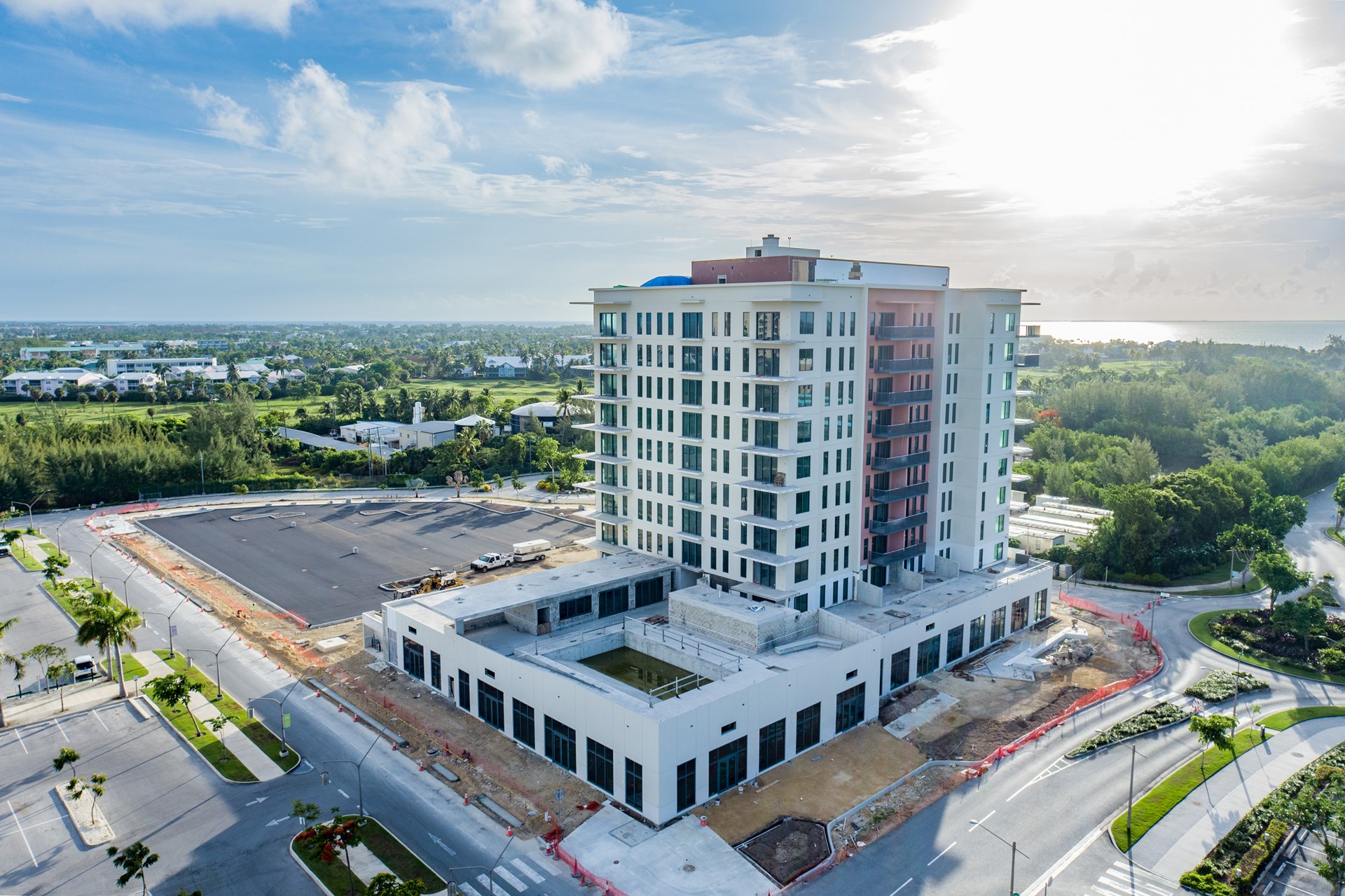
Kapok's scheduled opening is right around the corner and the newest addition to Camana Bay's community serves as a first-of-its-kind facility in several ways.
Not only is Kapok Camana Bay's first 10-storey residential apartment building, it also was designed to achieve Fitwel certification, a first in the Cayman Islands.
Certification systems like the WELL Building Standard and Fitwel are building rating systems focused on occupant health. Both of these certifications are backed by peer-reviewed scientific studies.
The concept of "architecture for health" — that a building can be designed, built and certified as “healthy” or developed with a focus on the overall health and well-being of its occupants — serves as the foundation for WELL and Fitwel.
Fitwel, for example, grants certifications to buildings and developments that meet specific criteria that align with a “vision for a healthier future where every building is enhanced to support the well-being of its occupants and support healthy communities," according to the Fitwel website.
These certifications are attracting the attention of developers, who believe clients understand how a built environment contributes to good health. They're also attracting the attention of investors who see a continued push for sustainability standards and a market sector with assets expected to reach US$ 50 trillion by 2025, according to Bloomberg.
The idea that architecture can affect a person’s health is not a new one.
The ancient Greeks incorporated public baths, athletic stadiums, health clinics and cultural centres into their urban planning. The ancient Chinese applied the feng shui principles of harmony, balance, wind and water to architectural design.
But what exactly does Fitwel mean? How are buildings designed for well-being? What factors contribute to the health of a building and its occupants? For Kapok, in particular, let's highlight five factors that make it a prime example of healthy architecture.
Promotes physical activity
Residents of Kapok will have their choice of ways to stay active in Camana Bay, which was built on the principles of New Urbanism, one of which is walkability. In addition to the Town Centre’s walkability and easy access to pedestrian paths, bike lanes, jogging trails and fitness amenities, Kapok residents will have exclusive access to a rooftop yoga lawn and a private swimming pool on the building’s second floor terrace.
Instils feelings of well-being
From air quality and efficient ventilation systems to controlled temperature, lighting and acoustics, Kapok — a tobacco- and smoke-free building — instils feelings of wellness and comfort for its residents. Additionally, access to free parking and nearby public transportation creates a sense of freedom while there's also easy access to health and wellness services at Align, Cayman Dental and Cayman Orthodontics and Health City.
Provides access to healthy food and water
With Foster's supermarket directly across the street, Kapok residents can easily stock up on fresh produce and nourishing foods. A few steps away is the weekly farmers market, which features local, seasonal ingredients. Nearby, over a dozen cafes and restaurants in the Camana Bay Town Centre offer healthy menu options, not to mention universal access to fresh water and various water bottle refilling stations.
Supports security and safety
All Cayman Islands buildings are required by law to meet certain occupant safety requirements. However, Kapok either meets or exceeds standards through its thoughtful use of interior and exterior lighting, fire safety measures, emergency preparedness plans and Camana Bay’s 24-hour security team.
Impacts surrounding community health
Community plays a key role in the well-being of humanity and Camana Bay’s master plan celebrates community through human-centric design. Kapok’s proximity to the Town Centre, which sees over 3,000 people coming and going each day, and its many amenities, green spaces, water features and entertainment options — to name a few — create a sense of community.
This article was originally published in the November 2022 print edition of Camana Bay Times.